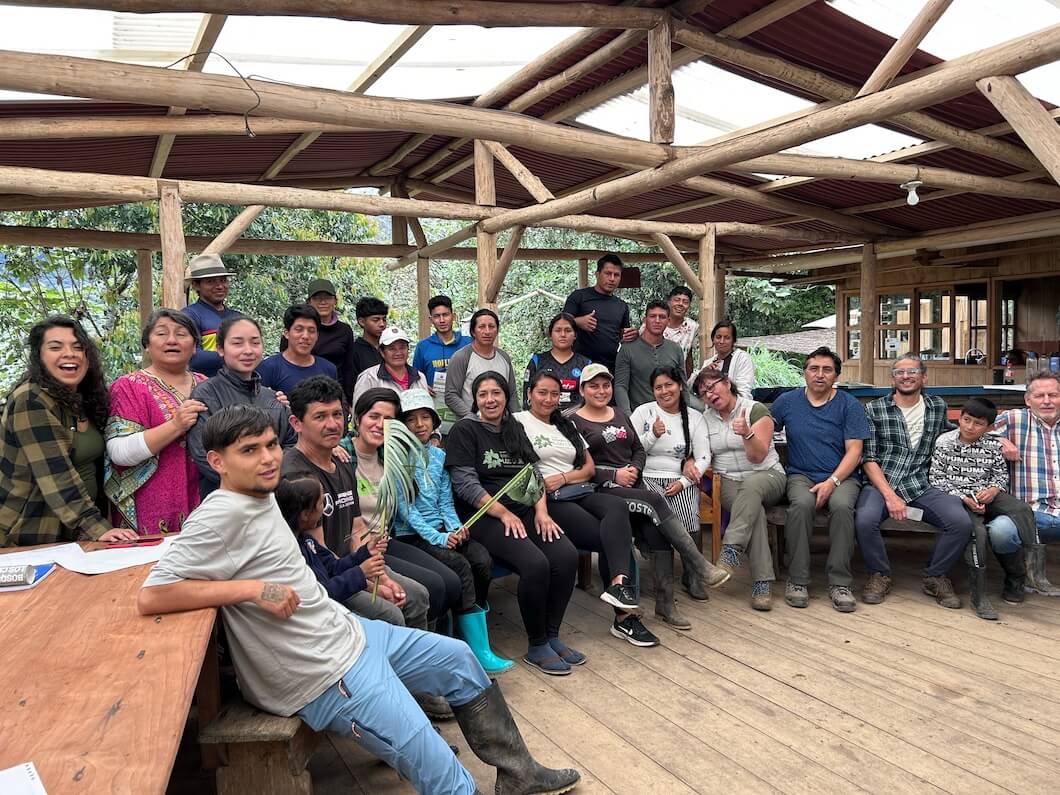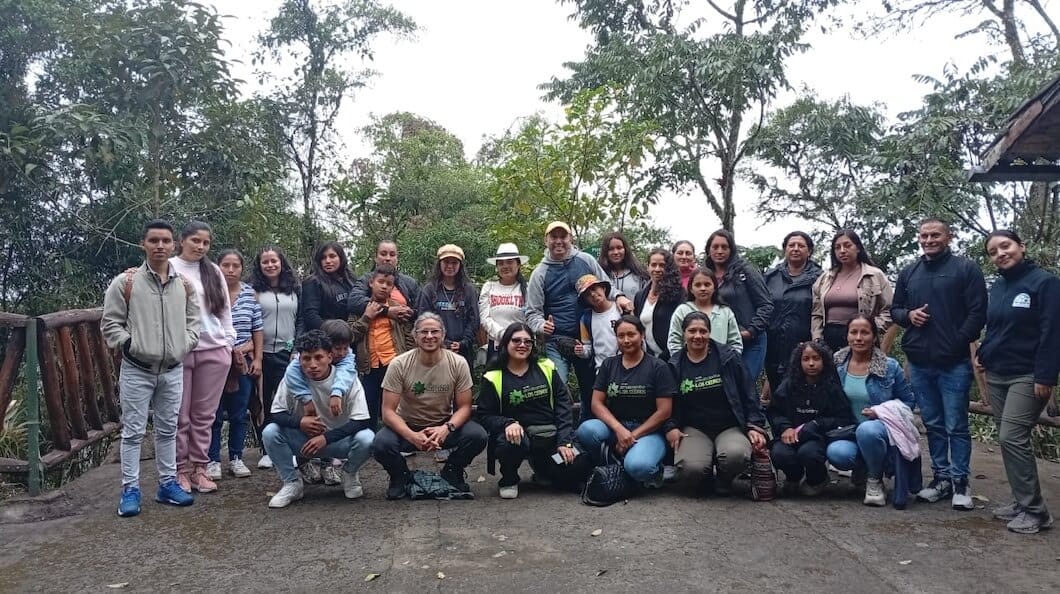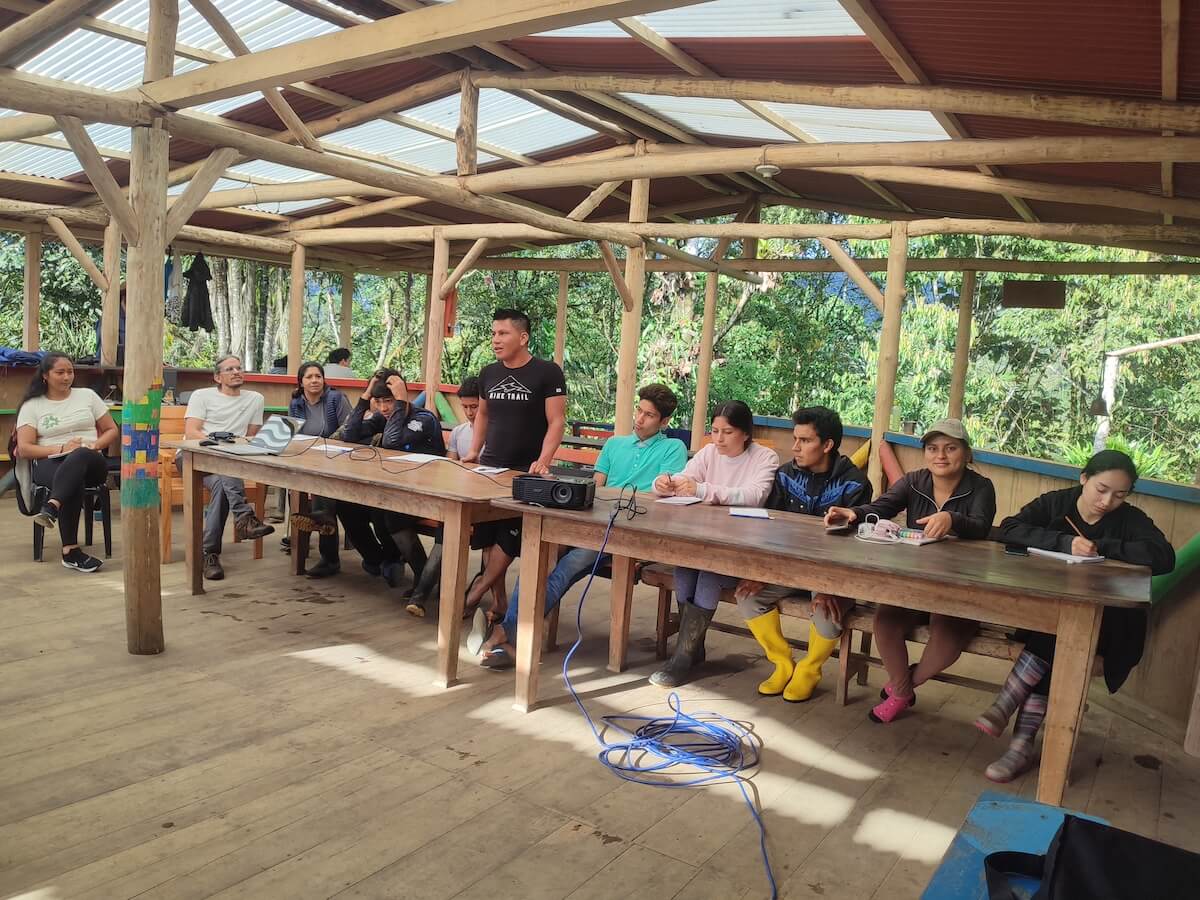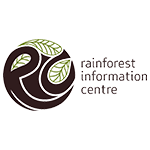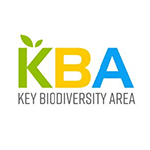by Monserratte Vásquez
Share
The passing of the ones we love hurts. And it especially hurts when those beings dedicated their lives to making this world more beautiful.
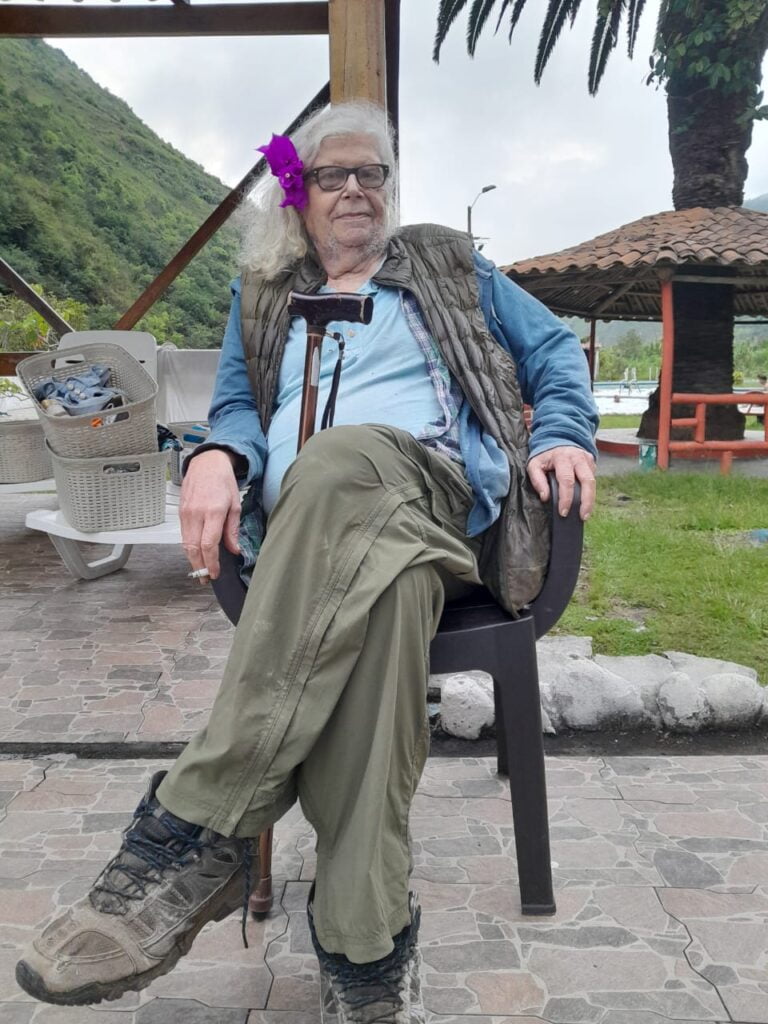
Bradford Josef DeCoux Byden 1951 – 2024
Josef DeCoux arrived in Ecuador during the 1980s, and the primary forests and pristine rivers of the Intag – Manduriacos Valley amazed him. So he, along with a group of conservation-minded friends, bought several farms that had conserved a good amount of forest, as well as the water sources for families of 10 Manduriacos communities downstream .
In 1989, he founded the Los Cedros Scientific Station, and in 1994, he secured state conservation status for Los Cedros, as a Protective Forest with around 6000 hectares. Since then, the Los Cedros Scientific Station has promoted scientific research with national and international universities and other educational institutions, spawning 130 publications that help us to better understand the ecological worth of the forest. The Station has also promoted tourism, the formation of community-led forest rangers and environmental education; in this way, the Station has co-managed the forest hand-in-hand with the communities.
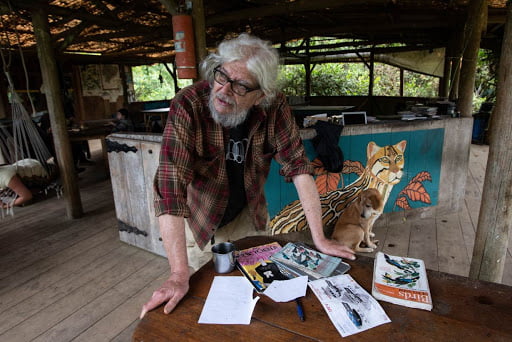
Throughout these almost 40 years, Josef definitely blended in with Los Cedros, and in his human condition, he fought to protect the whole web of life, the same free and biodiverse forest ecosystem other humans who were consumed by capitalism saw only in terms of economic gains, resources, appropriation and domination.
He dealt with invasions, loggers and – probably the strongest battle – against a transactional mining company and an extractivist State that granted 68% of the forest to mining concessions. Below all the marvelous biodiversity and rivers of pure, crystalline water, there is mineral, desired by industries that promote incessant growth, at the cost of destroying our -only- common home… Yes, Los Cedros is part of the tropical forest ecosystems who are foundational for the life and ecological balance of EARTH and who make up the INTAG valley, the same one besieged by mining companies. The same area that has a town raised to protect the forest and show the entire world that OUR TRUE WEALTH IS ABOVE THE GROUND.
It was in this last struggle that I had the honor of getting to know Josef, walking beside him and contributing a little bit to his immense life’s work.
The Los Cedros Forest case reached the Constitutional Court of Ecuador, exercising the rights of Nature, and the rights of communities to be consulted, to access clean water and to live in a healthy and ecologically balanced environment. Josef’s fight, together with a great team of scientists, lawyers, academics, community members and activists, put a stop to the devastating transnational mining and created jurisprudence for the defense of protective forests throughout this megadiverse country from being sacrificed to mining exploitation .
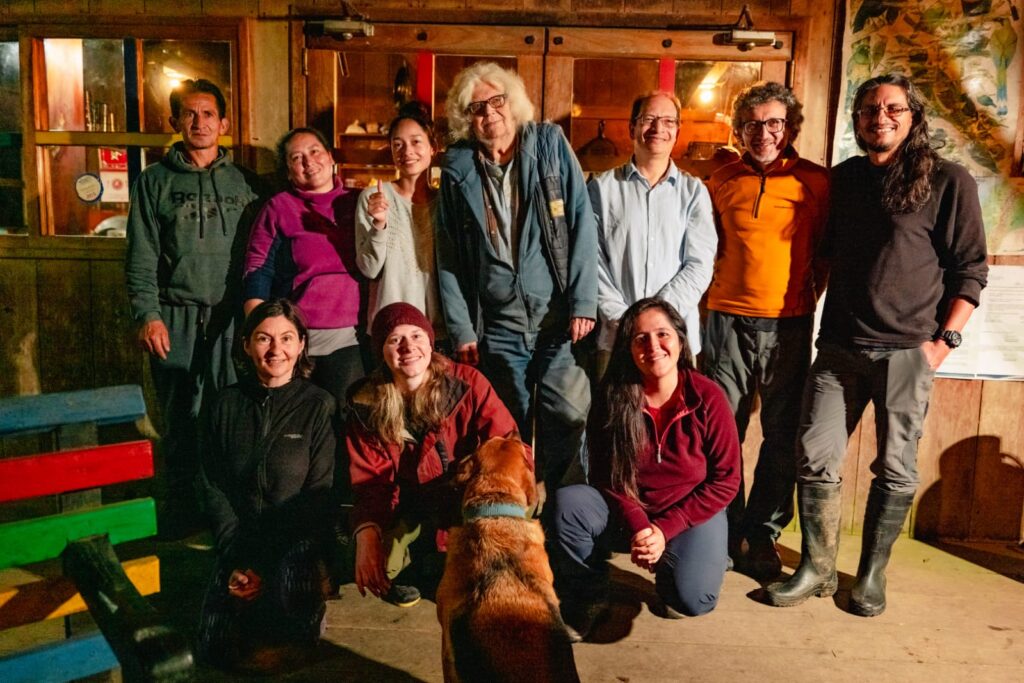
Josef DeCoux not only left an environmental legacy for the country and the entire world, but he also worked to dignify the lives of rural communities, which historically the governments in power have forgotten. He opted to link the Manduriacos Valley to the province of Imbabura: through the promotion of the Cotacachi Cantonal Unit Assembly since 1997, he arranged for the decentralization of the health system for the implementation of the first Manduriacos health center in the community of San Miguel de Chontal and the ambulance crew, doctors and nurses. At the same time, he helped bring electricity to the Manduriacos region through the Marginal Rural Electrification Fund (FERUM). He also contributed to the management of teachers for local schools. These examples barely scratch the surface of his career and invaluable contribution to the Intag-Manduriacos Valley.
I thank Josef for giving me the chance to walk alongside him, get to know and live with the wonderful Los Cedros forest. I am infinitely grateful to Earth for giving birth to him, for being a teacher to many and of course for having brought us together with Josef and the Los Cedros forest.
Josef, thank you for your tenacity, clarity, leadership, strength and tenderness. THANK YOU FOR EVERYTHING. THANK YOU SO MUCH.
Josef LIVES in every cedar, copal, guarumbo, mushroom, orchid, bromeliad, puma, monkey, olinguito, Andean black bear, frog, dragonfly, toucan, little tanager, snake, and bat.
The Los Cedros Research Station LIVES to honor and protect your legacy, Josef.
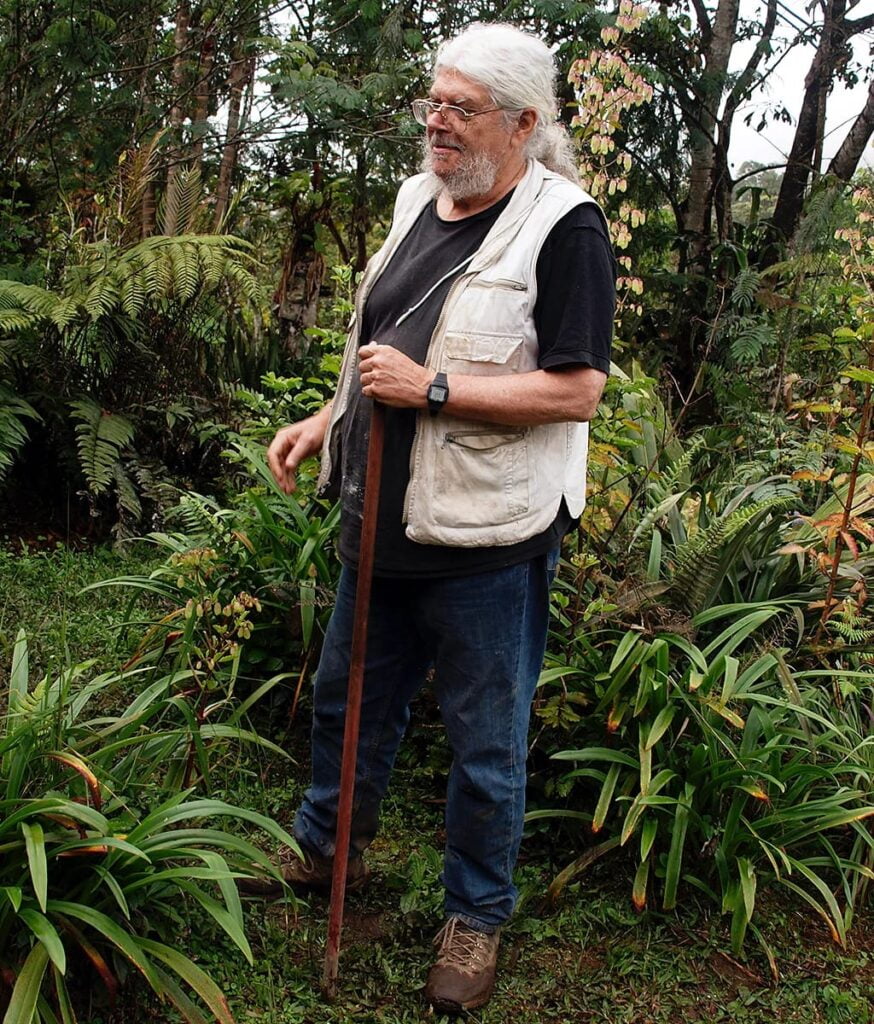
Foto: Bitty Roy
Related post
Within the framework of the Project “Preparing Civil Society for the Co-Management and conservation of the Los Cedros Protected Forest – KBA ECU 14” financed by the Critical Ecosystem Partnership Fund (CEPF), we held the introductory workshop on the Birds of the BPLC (KBA ECU14) and of Ecuador in March as part of the forest […]
Twenty community members from the Valle de Los Manduriacos, who are training to be forest rangers, participated in the territory and participatory mapping workshop held in March. The workshop consisted of two phases: the first focused on political mapping, led by José Cueva, a member of the CIPBAT team, and the second on social mapping […]
Representatives from the Los Cedros Forest communities visited Yunguilla to learn about sustainable development, organization, and collective hope. Author Jose Cueva
In February, the second phase of the Community Forest Ranger Training Program began, with 10 young adults from last year’s program joined by 10 new young adults from the communities surrounding the Los Cedros Protected Forest, including Brillasol, Magdalena Alto, Chontal, Magdalena Bajo, Pueblo Unido, Paraíso, Río Verde, Villaflora, and Cielo Verde. Each council received […]

